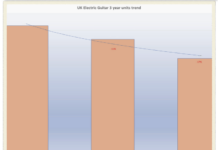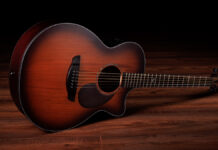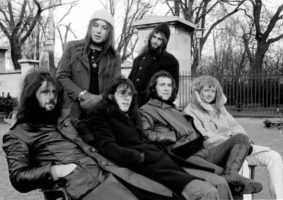
Techniques of Prog-Rockers Gentle Giant, Yes, Genesis and King Crimson
With the growing popularity of rock music in the mid-to-late Sixties, a great many young up-and-coming musicians were inspired—and encouraged—to push the limits of the musical form beyond anything that had come before.
The very roots of what was to become known as the progressive rock movement may be hard to pin down, but no doubt the musical experimentation of the Beatles, the Rolling Stones and Bob Dylan encouraged an ever-widening musical palette, inviting the musical creativity of early progressive bands like Pink Floyd, the Moody Blues, Soft Machine, Procol Harum and Frank Zappa’s Mothers of Invention.
Since the Sixties, each passing decade has seen further development of the progressive rock movement.
The music reached its peak popularity in the Seventies, and the Eighties and Nineties brought to the fore such bands as Styx, Rush, Marillion, Dream Theater, Queensrÿche, Porcupine Tree, Tool and Opeth. More recent arrivals include Coheed and Cambria, the Mars Volta and new-breed bands like Periphery and Animals As Leaders.
In this edition of In Deep, we’ll examine the envelope-pushing sounds of some of the essential prog-rock bands of the Sixties/early Seventies era, especially Yes, Genesis, Jethro Tull, Gentle Giant, King Crimson, Rush, the Dixie Dregs, and Emerson, Lake and Palmer. In its earliest incarnation, progressive rock built from the aggressive sounds of blues-rock and psychedelic rock, spearheaded by bands such as Cream, the Jimi Hendrix Experience, the Jeff Beck Group and Led Zeppelin, by incorporating classical-inspired themes and instrumentation. This was exemplified by British bands such as Deep Purple, the Moody Blues and Yes.
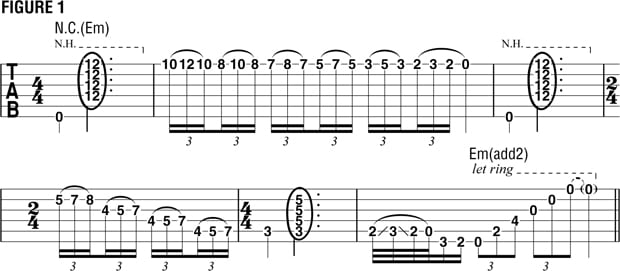
The brilliant Yes guitarist Steve Howe infused his classical and jazz guitar interests with a rock approach, yielding the cutting-edge guitar work heard on essential Yes releases, The Yes Album, Fragile and Close to the Edge. FIGURE 1 is an acoustic guitar figure along the lines of Howe’s intro to the Yes classic “Roundabout.”
Beginning with natural harmonics (N.H.) sounded at the 12th fret (produced by lightly laying a fret-hand finger on the given strings directly above the fret wire), the figure continues with legato lines executed with hammer-ons, pull-offs and slides, intended to produce a violin-like sound. The phrase ends with the arpeggiation of a harmonically rich Em(add2) chord. ELP bassist/guitarist Greg Lake utilized a similar approach for his intro to the song, “From the Beginning.”
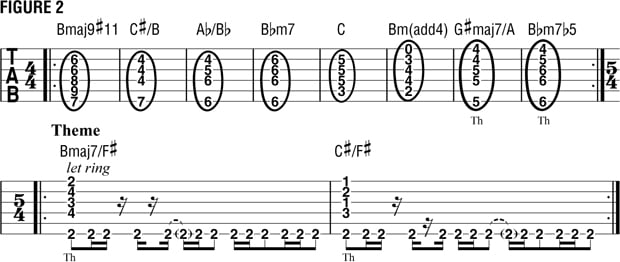
Genesis, another essential British progressive rock band, formed in 1967, but it wasn’t until 1972’s Foxtrot that the band reached widespread commercial fame. The album’s eerie, densely orchestrated opening track, “Watcher of the Skies,” begins with dark, unusual chords played on the organ. The first eight bars of FIGURE 2 offer a similar chord progression, featuring the twisted sounds of Bmaj9#11, G#maj7/A and Bbm7b5, all chords not commonly heard within the realm of rock music. At bar 9, a theme is introduced that is built from a sustained chord, below which a syncopated pedal tone figure is played.
This figure is played in the odd meter of 5/4. The use of odd and shifting meters was to become a staple of the progressive rock sound.

Jethro Tull, led by multi-instrumental genius Ian Anderson, borrowed equally from blues and heavy rock as from English and Celtic folk. The band’s second album, Stand Up, is a classic and features the powerful track “A New Day Yesterday.” FIGURE 3 offers a riff played in 12/8 meter that is along these lines.
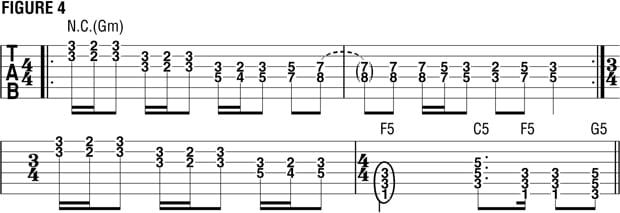
Tull’s third album, 1970’s Benefit, is among the band’s crowning achievements. One of the standout tracks is “To Cry You a Song,” which opens with a harmonized modal melody with a Gregorian chant vibe. FIGURE 4 illustrates a harmonized part that emulates it and can be played on one guitar.

Another band of multi-instrumental British musical virtuosos is Gentle Giant, formed in 1970. The band’s 1972 release, Octopus, brought commercial and critical acclaim, upon which the band would build to greater heights with their subsequent masterpiece, 1973’s In a Glass House. The title track opens with the multi-layering of different complex musical themes and rhythms, with an underlying guitar part not unlike that shown in FIGURE 5. Notice how this figure switches back and forth between 4/4 and 9/8 meters.
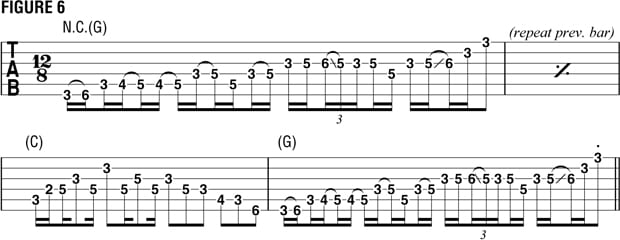
One of the greatest progressive rock bands ever is certainly King Crimson, led by yet another British guitar virtuoso, Robert Fripp. The band’s debut, 1969’s incredible In the Court of the Crimson King, features many prog-rock masterworks, none more powerful than the crushing opener, “21st Century Schizoid Man.” Halfway through the track, the band shifts abruptly to a complex melodic line played by all instruments. A similar line is illustrated in FIGURE 6, built from fast G blues scale phrases along with syncopated C9 arpeggios.
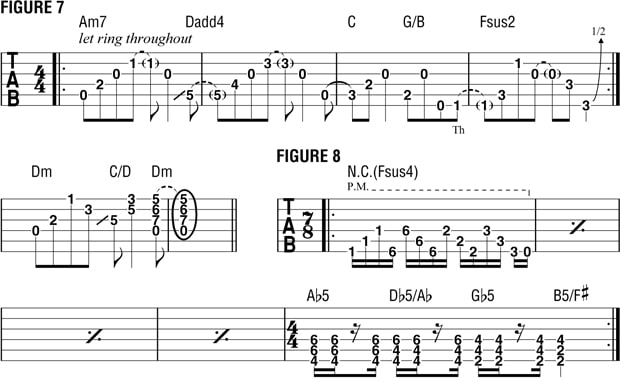
The aforementioned “From the Beginning” by Emerson, Lake and Palmer features great acoustic guitar work from Greg Lake. FIGURE 7 offers similar chordal arpeggiations. Be sure to allow all notes to ring as long as possible throughout the figure. The title track of ELP’s second release, Tarkus, represents a defining moment in the development of prog-rock. Built from stacked fourth intervals, FIGURE 8 illustrates a line similar to the song’s opening theme, played originally on organ and electric bass.

Though they would achieve great commercial success, Canada’s Rush drew great inspiration from the prog-rock movement. A good example of this inspiration can be heard on their instrumental “YYZ,” approximated in FIGURE 9.
Let’s wrap up with an example inspired by Dixie Dregs guitar great Steve Morse. FIGURE 10 melds elements of rock, blues, swing and bluegrass to create a propulsive line driven by deft pull-offs and open strings.
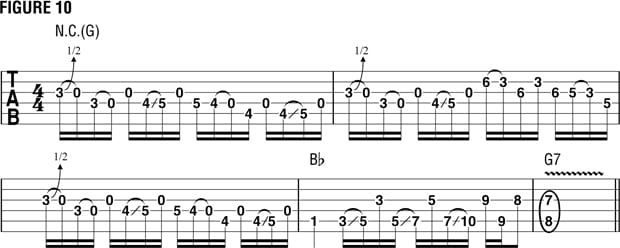
Part 1
Part 2
Part 3
Part 4
Source: www.guitarworld.com





